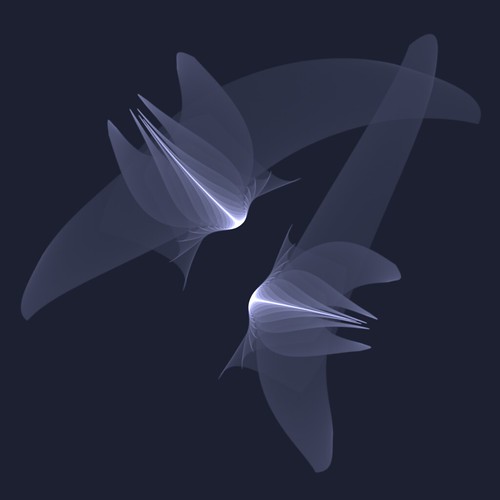Evan Sheehan | Looking Outwards | Generative
Fyre
I don’t think I could participate in a discussion about generative art without brining up chaotic systems and Fyre. Fyre is a tool for generating beautiful images from the Peter deJong equations. It was written by my roommates in college after David—one of my roommates—took a course in Chaotic Dynamics & Nonlinear Systems. They were invited to SIGGRAPH that year (must have been about 2004) to present that project.
This project has a lot of personal meaning to me because Fyre and Dr. Liz Bradley’s course on Chaotic Dynamics were my first real exposure to a lot of things that led me to take this course: nonlinear systems, fractals, and cellular automata. It was this course that introduced me to Conway’s game of life, which I now never tire of reimplementing—or trying to, at any rate—on any platform I come across.
NodeBeat
[vimeo=http://vimeo.com/22681027]
So this one is both interactive and generative. The large nodes with a + inside generate pulses. The pulses travel down edges connecting those nodes to the smaller nodes. When the pulses reach the smaller nodes they generate sound. Connections between nodes are determined by proximity. Distance also determine how long it takes a pulse to travel the edge and reach the node, resulting in different rhythms.
You can throw a bunch of these nodes out onto the board and just let it make whatever music that generates. You can also turn on movement and gravity of the nodes onscreen. As they shift on screen new edges between nodes are created and old ones are removed, resulting in different phrases and melodies.
Via Creative Applications Network.
Buchstabengewitter
[vimeo=http://vimeo.com/34613976]
I’m not entirely certain if this qualifies as generative, but this blog refers to it that way, so here it is.
Mainly I like this piece because it’s fun to watch. Personally, I enjoy typography, so typographic art appeals to me, but I suspect a lot of typographic art is uninteresting to the population at large. I admire a lot of the projects I see coming from Letters Are My Friends because they make typographic art more appealing to what I perceive as a wider audience.
One thing that attracts me to computational art in general is its capacity for making things that are not traditionally thought of as art—such as data or letterforms—more obviously beautiful.
